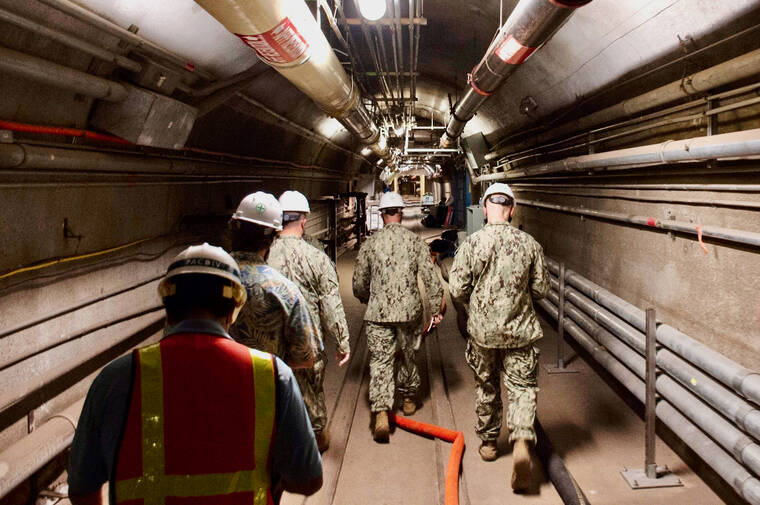U.S. military drains fuel from tank facility
HONOLULU — The U.S. military said it’s finished draining millions of gallons of fuel from an underground fuel tank complex in Hawai‘i that poisoned 6,000 people when it leaked jet fuel into Pearl Harbor’s drinking water in 2021.
Joint Task Force Red Hill began defueling the tanks in October 2023 after completing months of repairs to an aging network of pipes to prevent the World War II-era facility from springing more leaks while it drained 104 million gallons of fuel from the tanks.
The task force on Thursday held a ceremony to hand over responsibility for the tanks to Navy Closure Task Force-Red Hill. This new command, led by Rear Adm. Stephen D. Barnett, is charged with permanently decommissioning the tanks, cleaning up the environment and restoring the aquifer underneath.
Vice Adm. John Wade, the commander of the task force that drained the tanks, said in a recorded video released on Wednesday that Barnett understands “the enormity and importance” of the job.
Wade said the new task force’s mission was to “safely and expeditiously close the facility to ensure clean water and to conduct the necessary long-term environmental remediation.”
The military agreed to drain the tanks after the 2021 spill sparked an outcry in Hawai‘i and concerns about the threat the tanks posed to Honolulu’s water supply. The tanks sit above an aquifer supplying water to 400,000 people in urban Honolulu, including Waikiki and downtown.
The military built the Red Hill Bulk Fuel Storage Facility in the side of a mountain ridge to shield the fuel tanks from aerial attack. Each of the 20 tanks is equivalent in height to a 25-story building and can hold 12.5 million gallons (47.3 million liters).
A Navy investigation said a series of errors caused thousands of gallons of fuel to seep into the Navy’s water system serving 93,000 people on and around the Pearl Harbor naval base in 2021. Water users reported nausea, vomiting and skin rashes.
The Navy reprimanded three now-retired military officers for their roles in the spill, but didn’t fire or suspend anybody.
Shortly after learning of the spill, the Honolulu Board of Water Supply stopped pumping water from the aquifer that lies under the fuel tanks to prevent leaked fuel from getting into the municipal water system. The utility is searching for alternative water sources, but the Pearl Harbor aquifer was its most productive as it provided about 20 percent of the water consumed in the city.

